Syn.: Canthium bibracteatum (Baker) Hiern., Plectronia bibracteata Baker, Pyrostria comorensis Bojer ex Baker
Family: Rubiaceae Juss.
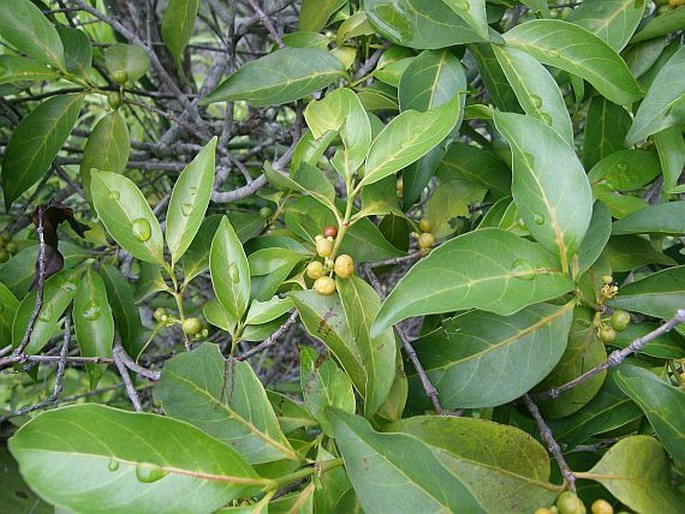
Distribution: East Africa (Kenya, Tanzania, Mozambique, Zimbabwe), Comoros Is., Madagascar and Seychelles. In Seychelles archipelago, there is known only from the highest granitic islands of Mahé, Praslin, La Digue and Silhouette.
Ecology: Understory of forests in low altitudes, shrubs on margins of glacis and in abandoned fields, from seashore up to 300 m above sea level. It grows on sunny, half-shaded or shaded places in sandy or stony soils, in stabil, hot and humid climatic conditions.
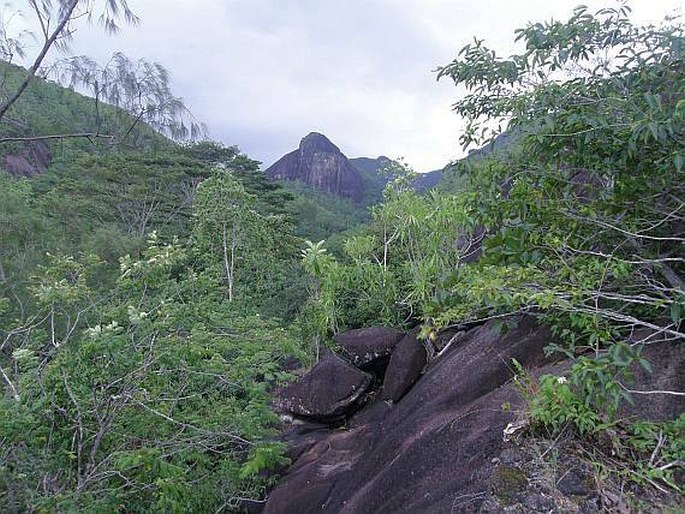
Description: Shrub or small tree up to 7 m. Leaves are thinly leathery, opposite, oblong or lanceolate, 8–13 cm long and 2,6–6 cm broad, entire, obtuse, deep green, shiny, venation is usually red, orange or yellow. Flowers are small, 4-merous, arranged into short umbellately dichasia; calyx lobes are short, obtuse, green; corolla is infundibuliform, about 4 mm in diameter, white; stamens are 4; pistil is united from 2 carpels, ovary inferior. Fruit is a globose drupe, 5–8 mm in diameter, green, turn to orange or brownish during ripening.
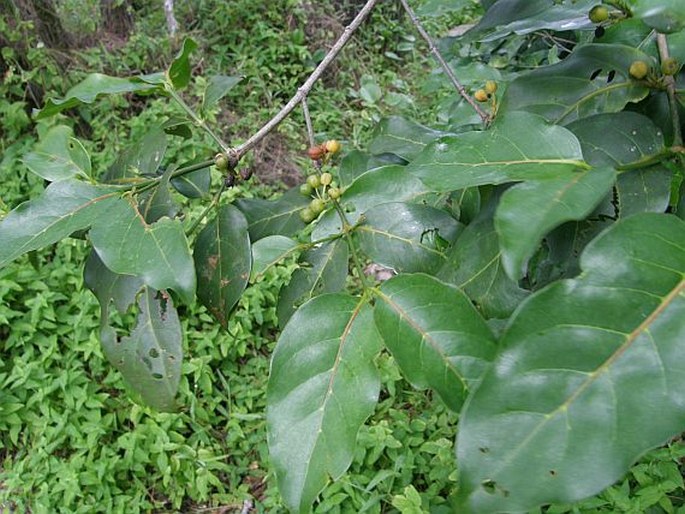
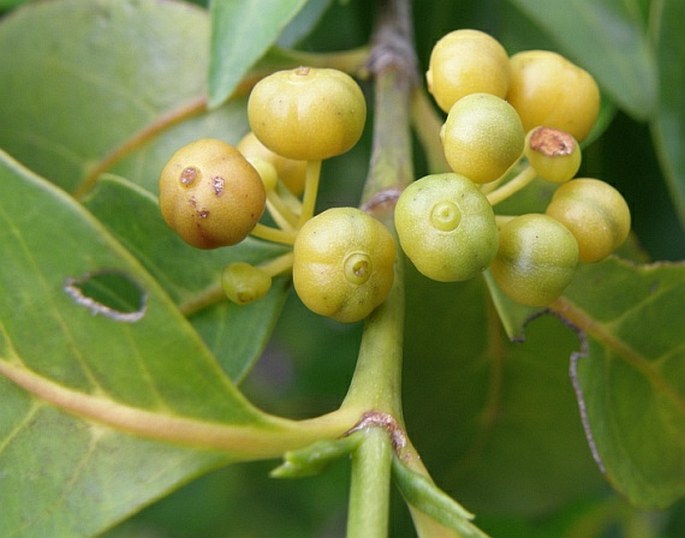
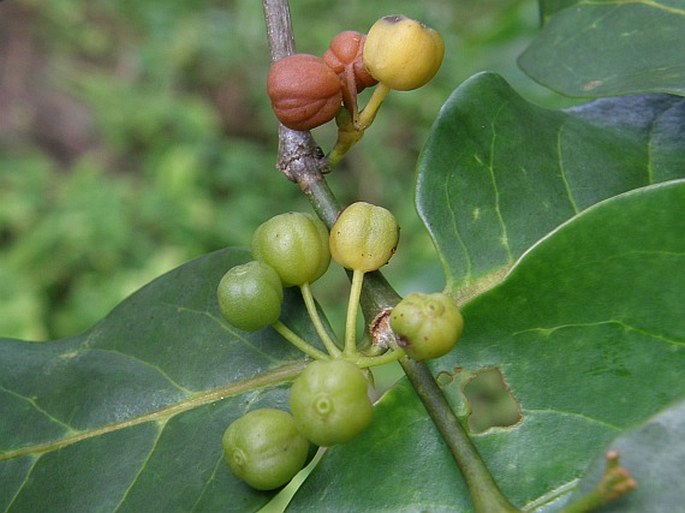
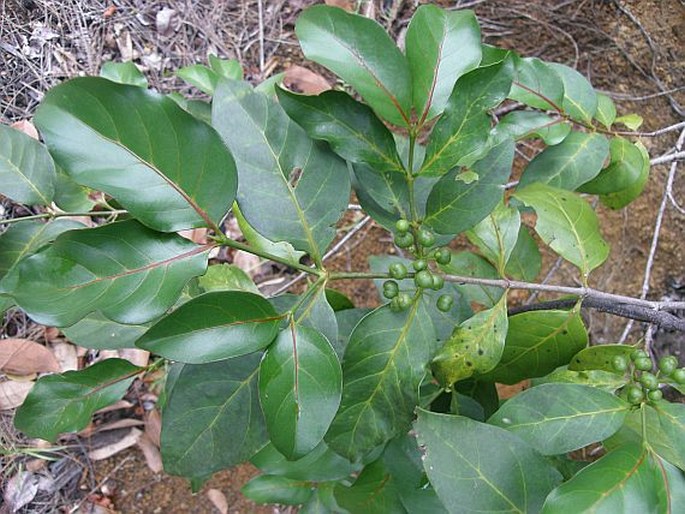
These images were taken in Seychelles, Mahé Is., Anse Major (February 5, 2011).


